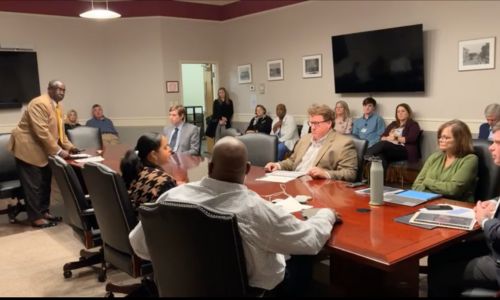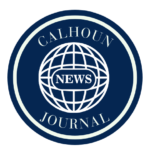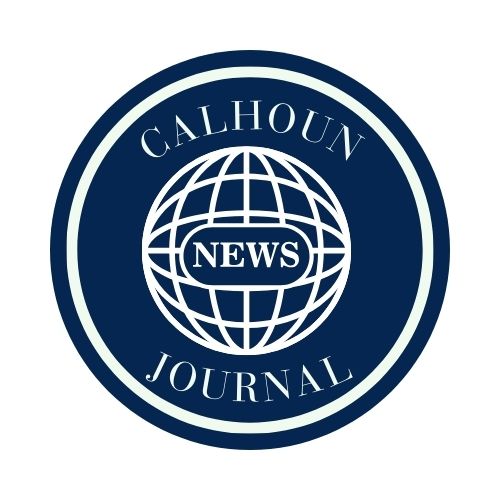Anniston, AL – The city of Anniston held the regular scheduled work session and city council meeting on December 17th, 2024.
Work Session
The Anniston City Council convened for a work session on Tuesday, December 17, 2024, at City Hall, focusing on a range of topics vital to the city’s development and operations. The meeting featured presentations on an economic impact assessment of Anniston Museums and Gardens by Jennifer Green, Director of Economic Analysis for the Public Affairs Research Council of Alabama, an update on emergency room improvements at RMC, and a proposed residential development at McClellan presented by Aaron Acker.
Additional agenda items included the approval of a cash reimbursement of $196.98 to DeMarcus Fomby of the Municipal Court Department for expenses incurred during CLE training in Montgomery, AL, the acceptance of a real property donation at 1116 Moore Avenue by Richard G. Thompson, and a review of the city’s 2024 accomplishments delivered by the City Manager. The council’s discussions reflected a forward-looking approach to community development and operational efficiency.
Jennifer Green, Director of Economic Analysis for the Public Affairs Research Council of Alabama, presented an Economic Impact Assessment of the Anniston Museums and Gardens. Using innovative geofencing technology, Green provided a detailed analysis of the economic contribution of the museums and gardens to Calhoun County. Geofencing enabled the team to capture visitor data beyond traditional metrics, such as ticket sales, by identifying attendees at events like weddings and galas. The study revealed approximately 60,082 visits in 2023, including 42,300 unique visitors from 35 states. Of these visits, 35,165 originated from within Calhoun County, 18,014 from other parts of Alabama, and 6,903 from outside the state.
Green explained that geofencing, which tracks anonymized device data, provided insight into visitor patterns and their origins. This method excluded brief visits under 10 minutes to ensure accurate data collection. Additionally, the study incorporated information about student visits, totaling 7,578, with 2,030 from Calhoun County and 5,548 from other areas. Visitor spending was analyzed based on state tourism data, with adjustments made to account for local and out-of-state spending behaviors. Direct spending within Calhoun County was estimated at $8.5 million, while spending by other Alabama visitors totaled $8.2 million, and out-of-state visitors contributed $5.6 million.
Green utilized an economic modeling tool, IMPLAN, to examine the ripple effects of this spending across various sectors. This input-output analysis highlighted direct, indirect, and induced economic impacts, such as job creation, labor income, and contributions to the local GDP. For example, the direct spending by tourists supports jobs and businesses, which in turn induces further spending within the community. Green emphasized that the total economic impact of the Anniston Museums and Gardens goes beyond direct spending, illustrating its significance as a cultural and economic asset to the region.
The presentation at the RN-CEO event provided an in-depth update on the improvements made at RMC’s emergency room (ER) following the transition from Springfield to RN-CEO as the sole provider in the community. Katie Williams, the Chief Nursing Officer, highlighted the significant changes and the challenges that were addressed over the past year. These included consolidating emergency departments, ICUs, detox programs, and inpatient services, with the goal of improving patient throughput and retention rates. Post-transition, the ER saw a 72% retention rate, and staff worked to increase physician and nursing coverage to accommodate a higher patient volume, especially during peak hours.
Key initiatives were introduced, such as a 24-hour triage system and the addition of a flow nurse to streamline patient care. The ER also implemented a zone system for managing patients more efficiently. This included creating specialized areas for low-acuity patients to prevent overcrowding in the main ER area. The facility underwent significant restructuring, including the conversion of previous spaces into treatment zones for lower-acuity patients. The presentation also emphasized the challenges of handling a large number of mental health patients and the importance of improving patient satisfaction scores, which had been impacted by long wait times and extended lobby stays before the transition.
Staffing changes were crucial to accommodate the increased patient volume, with the addition of 20 full-time equivalent staff members. Physicians’ and nurse practitioners’ shifts were adjusted to ensure better coverage throughout the day. With the ER’s growing demand, additional treatment areas were developed to manage more patients, ensuring that both high and low-acuity cases were handled effectively. This transformation also included redesigning the ER’s layout to accommodate new patient zones, with an emphasis on improving patient comfort and reducing wait times. Ultimately, these efforts aimed to create a more efficient, patient-centered experience while enhancing the facility’s capacity to manage the community’s healthcare needs.
Aaron Acker presented a proposal for a residential development on a 42-acre parcel of land at McClellan, located near General Watson and Summerall Gate Road. This land, previously occupied by military barracks, has been left with over six acres of concrete slabs and is bordered by three public streets. Acker envisions transforming this area into a residential subdivision with four phases. The first three phases, located in the southern part of the parcel, would consist of 41 lots. The development aims to clear the land, removing concrete slabs and improving stormwater drainage, making it more suitable for housing while benefiting the surrounding area by reducing impervious surfaces.
The project, which falls under the SN2 zoning classification for suburban neighborhoods, would offer single-family homes and connect to existing community facilities. Acker emphasized his long-standing ties to the area, including his family’s business history, and described the development as a “win-win” for the community. Despite previous setbacks, including difficulties in attracting developers, Acker pushed for a public development model using public funds to avoid profit-driven motives and ensure that the community directly benefits.
The city’s investment thus far includes $60,000 for engineering and survey work and a $288,000 contract for clearing and cleaning the site. The next steps would require additional funding for underground utilities, including power, sewer, and water systems, with an estimated cost of $280,000. Acker requested the city’s support for these infrastructure costs, totaling $230,000, to move the project forward. He emphasized that the development represents the highest and best use for the property, which is well-suited for residential development with access to water and sewage systems. Acker concluded by urging the city to grant the necessary approvals to protect the property and ensure that it is ready for future development, making it more attractive to potential developers.
Richard G. Thompson, along with Kathleen Thompson, donated the property located at 1116 Moore Ave, Anniston, AL, to the City of Anniston. Richard Thompson explained that he had initially purchased the property with the intention of developing it. However, after some consideration, he decided to donate the property to the city, expressing his gratitude and willingness to contribute to the community. The donation was placed on the council’s consent agenda for approval.
During the City Manager’s update, a variety of important projects and plans were highlighted for 2024 and 2025, focusing on the progress made by the city and future priorities.
- 2024 Accomplishments and Progress: The City Manager emphasized the continuous progress of the city’s projects, particularly the success of the comprehensive plan and capital improvement projects (CIP). The city has been successfully following these plans, and with the finance director’s efforts, all projects are on track.
- Priorities for FY2025: Looking ahead, several key initiatives were identified:
- City Hall Downtown Transition: Plans are in motion for moving city operations to the downtown City Hall.
- Training for City-Appointed Board Members: Training for board members is highlighted as an important area for improvement, ensuring that appointees are properly prepared for their roles.
- Airport Master Plan: The completion of the airport master plan is expected by winter 2025.
- Transition of Clubs to City Control: The city plans to complete the transition of certain clubs to city management by April 2025.
- Healthcare Forward: The city is working on leadership transitions for healthcare forward, which is expected to progress in 2025.
- Financial Management and Transparency: The City Manager praised the council for their effective handling of the city’s finances, particularly after the COVID-19 pandemic. With over $13 million in funds, all criteria for the use of these funds will be met by the end of the year, with the completion of associated projects by September 30, 2025.
- Acknowledgment of Council’s Promises: The City Manager commended the city council for their commitment to fulfilling their promises to the citizens. The council’s leadership has ensured that funds were allocated and managed properly, especially in post-COVID times, and their actions reflect a strong dedication to progress.
- City Manager Recruitment: The council received resumes from nine candidates for the city manager position. The City Manager suggested setting up interviews for these candidates at the beginning of the year and holding a panel session following the meeting on the 7th.
- Development Plans for the Heaton Model Property: The old Heaton Model property, located at the intersection of the Ladiga Trail, is set to be developed. This site’s location is expected to bring significant changes and opportunities to the area.
Overall, the City Manager’s update highlighted successful project implementations, strategic plans for the upcoming years, and a strong emphasis on financial accountability and leadership.

City Council Meeting
Roll Call
- Mayor Jack Draper – Present
- Ward 1 – Lewis Downing – Present
- Ward 2 Councilman Demetric D. Roberts – Present
- Ward 3 Councilwoman Ciara Smith – Present
- Ward 4 Councilwoman Millie Harris – Present
The Anniston City Council meeting on December 17th, 2024, included several key agenda items and discussions.
- Invocation and Pledge of Allegiance: The meeting began with Reverend David Hodnett of St. Michaels Episcopal Church delivering the invocation.
- Minutes Approval: The minutes of the December 3, 2024, and December 12, 2024, special called meeting were approved.
- Agenda Adoption: No additions or deletions were made to the agenda, and it was adopted unanimously.
Public Hearings and Unfinished Business:
- Consent Agenda: Resolutions were passed, including one accepting a real property donation and another authorizing reimbursement to city officials for travel expenses.
- Ordinances:
- The council passed an ordinance on the second reading amending tobacco shop regulations to include various tobacco products, CBD oil, and vaping products, with restrictions on underage entry.
- A second ordinance on the second reading designated polling places and hours for the upcoming municipal elections, with specific locations outlined for each ward.
Council Comments: Several council members expressed appreciation for the city’s progress. Council Member Downing highlighted improvements to the city’s website and commended staff for their hard work. Council Member Roberts publicly recognized a city employee, Coach Frazier, for his contributions. Other council members praised the recent city parade, the best-attended in years, and acknowledged the hard work of city staff. They also expressed concern for public safety, urging residents to be cautious during the winter months, and wished everyone a happy holiday season.
The meeting concluded with a reminder to be mindful of those less fortunate during the holidays.











